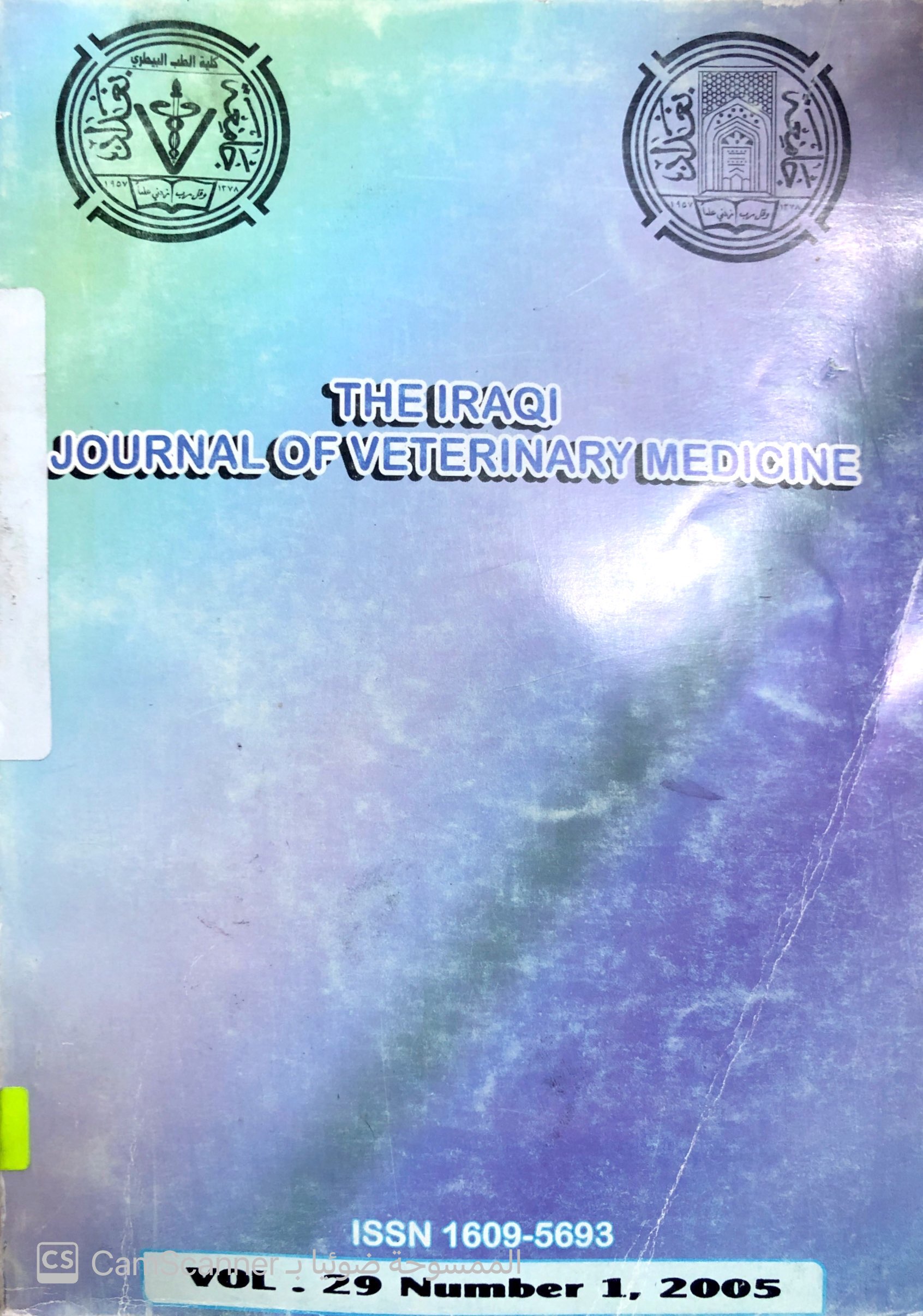Post Partum Pyometra In Iraqi Buffaloes : Clinical and Therapeutical Study A.Sh.Sultan ;AL-hamedawi ; T.M. and S.O. Hussain
Main Article Content
Abstract
The study was conducted on 118 buffaloes suffering from opened
pyometra 20-30 days post partum in AL-thahab AL-abiadh village west of
Baghdad Province, their ages ranged from 3-6 years.
They were divided randomly in to 4 groups . Group one included (27 buffalo)
treated with 15 mg of PGF2α ( Prosolven )R IM, The 2nd group (32 buffalo)
treated with 15 mg of PGF2α and 15 mg estradiol benzoate IM . The 3rd group
(29 buffalo) treated with 15 mg of PGF2α and 50 . 100 ml of lugol’s iodine 0.5
% intra-uterine.
The 4th group (30 buffalo) treated with 15 mg of PGF2α and 4 gm of
Oxyteracycline 20% (20 ml of Oxy. plus 50-100 ml disilled water) intra-uterine.
Results showed that the 1st and 2nd response in 4 treated groups were
66.2%, 84.3%, 79.3% and 86.6% respectively .The response was high in the 2nd
and 4th group (P < 0.01). These responses represent also the conception rate for
these 4 treated groups. The means ± SE of days open for above groups were
98.4± 6.4 ,84.2 ± 4.4 ,97.3 ± 3.8 and 82.7 ± 4.6 respectively ,the second and
fourth group were significant (P < 0.01).
The number of newly born calves was 94 calves (46 male,48 female) The
alive were 87(92.6%) and dead 7 (7.4%), so we conclude that the PGF2α has an
effective role in the treatment of pyometra in buffalo and it’s effect increasing
when it combined with oxytetracycline 20% and estradiol benzoate together .





